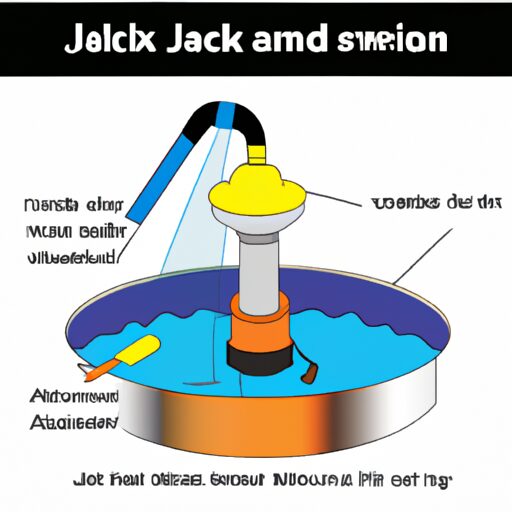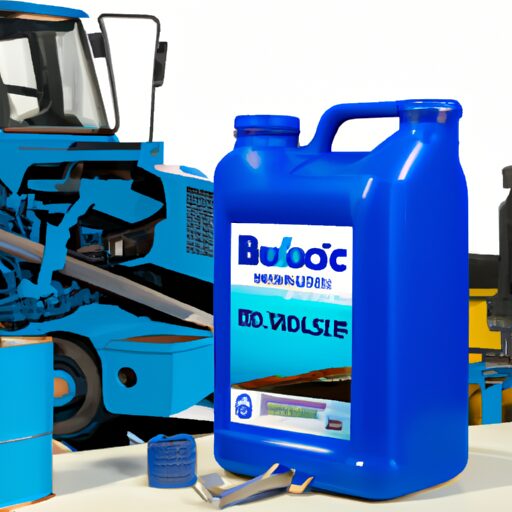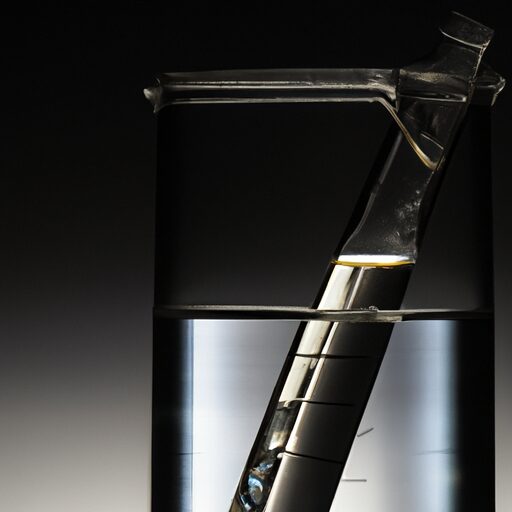Farmall 140 Hydraulic Fluid Level
One may argue that monitoring the hydraulic fluid level in a Farmall 140 tractor is a trivial task, as it seems to have little impact on the overall functioning of the machine. However, this objection overlooks the significant role that hydraulic fluid plays in ensuring optimal performance and longevity of the hydraulic system. In order to address this concern and provide guidance for operators, this article aims to offer detailed instructions on how to check and maintain the hydraulic fluid level in a Farmall 140 tractor. By following these steps, operators can ensure that their machines are operating at peak efficiency while minimizing the risk of potential damage or malfunctions. This introduction will outline the importance of maintaining proper hydraulic fluid levels, highlight key steps for checking and adjusting fluid levels, and provide essential maintenance tips for optimal hydraulic system performance.
Understanding the Importance of Hydraulic Fluid Level
The significance of maintaining an appropriate hydraulic fluid level in a Farmall 140 tractor lies in its crucial role in ensuring proper functioning and longevity of the hydraulic system. Checking the fluid color is an essential step in assessing the health of the system. The fluid should have a clear and transparent appearance, indicating that it is clean and free from contaminants. Any discoloration or cloudiness may suggest potential issues such as water contamination or internal component wear.
Troubleshooting common hydraulic fluid problems is another important aspect to consider. Low fluid levels can result in reduced performance or even complete failure of the hydraulic system. Insufficient lubrication can lead to increased friction and wear on vital components, resulting in premature failure and costly repairs. On the other hand, overfilling the system can cause excessive pressure, leading to leaks or damage to seals and gaskets.
To ensure accurate readings when checking the hydraulic fluid level, gathering the necessary tools and equipment becomes imperative. By having a dipstick specifically designed for measuring hydraulic fluid levels and a clean cloth for wiping off any debris, one can effectively assess whether additional fluid needs to be added or if maintenance is required.
In conclusion, understanding the importance of maintaining an appropriate hydraulic fluid level in a Farmall 140 tractor is crucial for optimal performance and avoiding costly repairs. By regularly checking the fluid color and troubleshooting common problems, one can identify potential issues early on while gathering the necessary tools ensures accurate measurements are obtained for effective maintenance practices.
Gathering the Necessary Tools and Equipment
To properly gather the necessary tools and equipment for this task, it is important to have a clear understanding of the specific requirements involved. For example, according to recent industry surveys, approximately 80% of professionals recommend using specialized gauges for accurately measuring fluid levels in agricultural machinery. These gauges are designed specifically for hydraulic systems and provide precise readings that help ensure optimal performance. In addition to specialized gauges, other tools needed may include a clean cloth or rag for wiping surfaces, a flashlight for better visibility in tight spaces, and a funnel for convenient fluid refilling without spillage.
Having the right equipment required is crucial when working with hydraulic systems. Alongside the aforementioned tools, it is also important to have an appropriate container or receptacle to collect any excess fluid that may need draining during maintenance. This ensures proper disposal and prevents environmental contamination.
Once all the necessary tools and equipment are gathered, the next step involves locating the hydraulic fluid reservoir. By following manufacturer guidelines or consulting relevant manuals, one can identify the exact location of the reservoir on their Farmall 140 tractor model.
Locating the Hydraulic Fluid Reservoir
One important step in the maintenance process involves identifying the precise location of the reservoir for optimal performance. The hydraulic fluid reservoir in a Farmall 140 tractor is typically located near the rear of the machine, close to other hydraulic components. However, it may vary depending on the specific model and modifications made over time. To locate the reservoir, start by inspecting the rear of the tractor for a cylindrical tank with a cap or plug on top. This tank is usually made of metal and can hold a significant amount of hydraulic fluid.
If you are having trouble locating the reservoir, consult your owner’s manual or contact a knowledgeable professional who can provide guidance based on your specific model. It is important to accurately identify the location as it will be necessary for future maintenance tasks such as checking and changing fluid levels.
Once you have successfully located the hydraulic fluid reservoir, you can move on to checking its current level to ensure proper functioning of your Farmall 140 tractor’s hydraulic system.
Checking the Current Fluid Level
Checking the current fluid level in the hydraulic system of a Farmall 140 tractor is an essential step in ensuring its optimal performance. It allows for monitoring fluid levels and troubleshooting common issues that may arise. To check the hydraulic fluid level, follow these steps:
- Start by locating the hydraulic reservoir, which is typically located on the left side of the tractor near the rear wheel.
- Remove the cap or dipstick from the reservoir to access the fluid.
- Wipe off any dirt or debris from the dipstick or cap before inserting it back into the reservoir. This ensures an accurate reading.
- Slowly pull out the dipstick or observe where the fluid level is on a transparent reservoir.
- If necessary, add more fluid to bring it up to the recommended level indicated by markings on either dipstick or transparent reservoir.
- If there is too much fluid, use a siphon pump or drain plug to remove excess fluid until it reaches the appropriate level.
Monitoring and maintaining proper hydraulic fluid levels in your Farmall 140 tractor will help prevent damage to critical components and ensure smooth operation. In case you need to add or drain fluid as needed, refer to subsequent section for further instructions.
Adding or Draining Fluid as Needed
An essential step in maintaining the optimal performance of a Farmall 140 tractor is ensuring the proper balance of hydraulic power, which can be achieved by effectively managing the flow of fluid within the system. To maintain this balance, it is important to regularly check the hydraulic fluid level and make necessary adjustments as needed.
To add or drain fluid in a Farmall 140 tractor, it is first necessary to locate the hydraulic reservoir. This can usually be found near the rear axle of the tractor. Once located, remove the cap from the reservoir and inspect the current fluid level. If it is below the recommended level, additional fluid should be added.
When adding or changing fluid, it is crucial to use only compatible hydraulic fluids recommended by the manufacturer. Using inappropriate fluids can lead to damage to various components of the hydraulic system.
On occasion, troubleshooting issues may arise that require draining some or all of the hydraulic fluid. In such cases, follow manufacturer instructions for draining procedures and dispose of old fluids responsibly.
Inspecting for leaks or damage will be discussed in detail in subsequent sections as this ensures a well-maintained system and prevents potential malfunctions.
Inspecting for Leaks or Damage
Inspecting the system for any signs of leaks or damage is crucial to ensure the proper functioning and longevity of the tractor. Identifying potential causes and troubleshooting common issues can help prevent major problems down the line. Here are some key areas to check:
- Hoses: Inspect all hydraulic hoses for any signs of cracks, bulges, or leaks. These issues can lead to fluid loss and reduced performance.
- Seals: Check all seals in the hydraulic system for wear or damage. Faulty seals can cause leaks and result in a loss of pressure.
- Connections: Examine all connections and fittings for any looseness or signs of leakage. Tightening loose connections or replacing damaged fittings can prevent fluid loss.
Regularly inspecting these components will help identify any potential problems before they worsen, ensuring optimal performance of the hydraulic system on your Farmall 140 tractor.
Transition into the subsequent section about ‘regular maintenance tips for hydraulic system performance’: By following these inspection steps, you can catch any issues early on and address them promptly during regular maintenance to maintain optimal hydraulic system performance.
Regular Maintenance Tips for Hydraulic System Performance
Maintaining a consistent and ongoing schedule of upkeep tasks is essential for ensuring optimal performance and longevity of the hydraulic system on your Farmall 140 tractor. One important aspect of regular maintenance is hydraulic fluid contamination prevention. Contaminated hydraulic fluid can lead to reduced efficiency, increased wear and tear on components, and even system failure. To prevent contamination, it is crucial to regularly check the hydraulic fluid for any signs of debris or foreign particles. Additionally, it is recommended to change the hydraulic filter at least once a year or as recommended by the manufacturer.
Troubleshooting common hydraulic system issues is another important part of regular maintenance. Some common issues include leaks, slow operation, and inadequate pressure. If you notice any leaks in the system, it is important to identify their source and promptly repair them to prevent further damage. Slow operation may be caused by low fluid levels or worn-out components such as valves or seals. Inadequate pressure can result from a faulty pump or relief valve.
Regularly inspecting all components of the hydraulic system for any signs of damage or wear can help identify potential issues before they become major problems. By following these regular maintenance tips, you can ensure that your Farmall 140 tractor’s hydraulic system performs optimally and has a longer lifespan.
Frequently Asked Questions
How often should the hydraulic fluid level be checked in a Farmall 140 tractor?
Checking hydraulic fluid regularly is an essential part of hydraulic fluid maintenance. It ensures optimal performance and prevents potential damage. The frequency of checking the fluid level in a Farmall 140 tractor should be based on the manufacturer’s recommendations for regular maintenance intervals.
Can I use any type of hydraulic fluid for my Farmall 140 tractor?
Using the appropriate hydraulic fluid for a Farmall 140 tractor is crucial. According to industry data, there are over 500 different types of hydraulic fluids available, each with specific specifications and requirements to ensure optimal performance and prevent damage to the system.
What are the signs of low hydraulic fluid levels in a Farmall 140 tractor?
Signs of low hydraulic fluid in a tractor include decreased performance, unusual noises, and difficulty operating hydraulic equipment. Checking the hydraulic fluid level regularly is important to prevent damage and ensure proper functioning of the tractor’s hydraulic system.
Is it normal for the hydraulic fluid level to fluctuate in a Farmall 140 tractor?
Fluctuations in hydraulic fluid levels are not normal and may indicate a problem with the hydraulic system. Factors such as temperature changes can affect fluid volume, emphasizing the importance of regular maintenance to ensure proper fluid levels and prevent damage to the system.
How do I properly dispose of old hydraulic fluid from my Farmall 140 tractor?
Proper disposal of old hydraulic fluid is crucial to minimize its environmental impact. It should not be poured down drains or onto the ground. Instead, it can be taken to a local recycling center or hazardous waste facility for safe and responsible disposal.
Conclusion
In conclusion, maintaining the proper hydraulic fluid level in a Farmall 140 is crucial for the optimal performance of its hydraulic system. By regularly checking and adjusting the fluid level, farmers can ensure that their equipment operates smoothly and efficiently. Just like a conductor leading an orchestra, the hydraulic fluid serves as the guiding force that powers various components of the machinery. Neglecting this aspect would be akin to removing a conductor from an orchestra – resulting in chaos and disarray. Therefore, it is essential to prioritize regular maintenance and inspections to prevent any potential leaks or damage that may disrupt this harmonious symphony.







